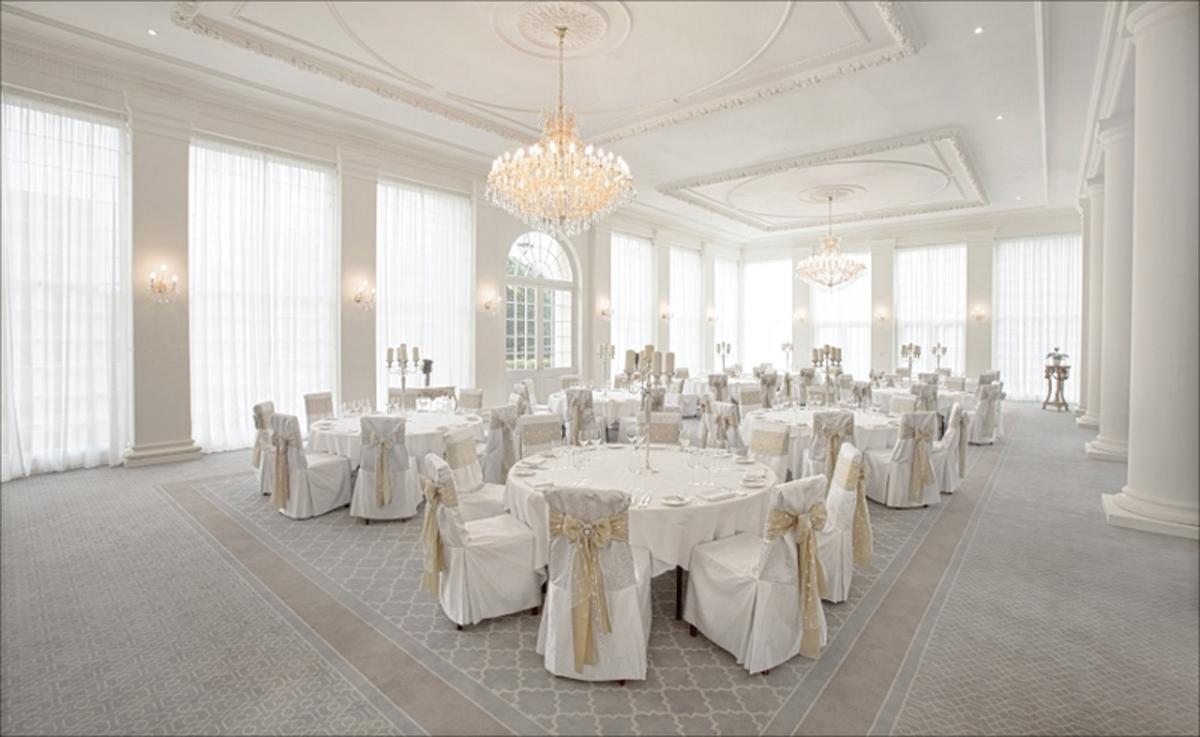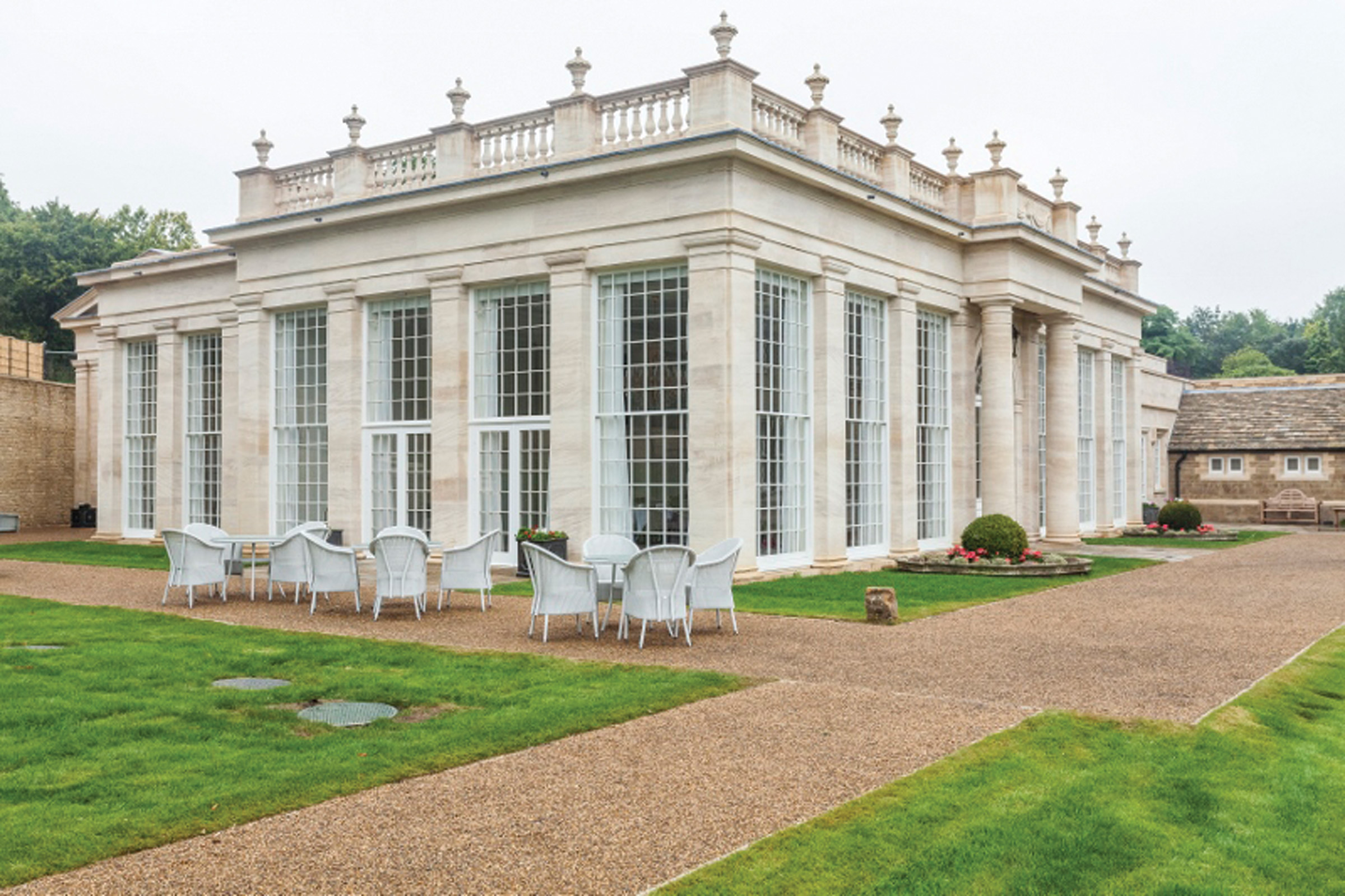Stamford Stone supplies Clipsham limestone for new orangery at Rushton Hall
Rushton Hall is an exceptionally grand stately home in Northamptonshire. These days it is a hotel with 46 bedrooms. You can sleep in a four-poster bed there for £350 a night. But the building is listed Grade I, so when the operators wanted a new orangery as a venue for weddings and other events it was always going to have to be something special. And as you can see from the photographs here, it is.
The orangery opened last month (September), the latest addition to a mansion built by Thomas Tresham after he bought a whole village, known as Rushton St Peter, with its cottages and the church of St Peter, in 1438 to accommodate it. A front gallery was added in 1600 to form a courtyard enclosed within the walls.

There was never any question that the orangery would have to be built of stone to match the existing building, which meant it would have to be constructed using the fine limestone of the East Midlands and that Historic England would have to be involved.
The stone chosen for this extension to Rushton Hall was Clipsham from Stamford Stone.
Using the matching stone means it will quickly weather to blend in with the original building.
Stamford Stone worked with architects The Strangeway Partnership and design consultants on the three-year project, which went through a lengthy planning processes involving close scrutiny from Historic England.
Dan Wilson, Director of Stamford Stone, says: “We are very proud to have been chosen to be a part of the new Orangery at Rushton Hall Hotel. The final result is a beautiful and impressive addition to an important part of England’s heritage.”
As well as its impressive stone exterior, the entrance hall of the Orangery is in the same stone with a marble fireplace, also from Stamford Stone. And the company supplied the floors in another of its local limestones, Greetham, with Blue Clipsham banding and cabochons.
The stone was fixed by Lee Muxlow’s specialist stone contracting business in Peterborough, Muxlow & Son.
There is an extensive bar, elegant ballroom, state room and a picture gallery with minstrel balcony. There is also guest accommodation in the style of a country house stable yard.
Stamford Stone’s design expertise was called upon for the stone façade over the large windows. The company made the stone self-supporting so there was no need for secondary steelwork.
Dr Dale Dishon, Historic England’s Principal Inspector of Historic Buildings & Areas, said of the new extension once the design had been finalised: “Historic England was pleased to support the planning proposals for the Orangery function suite at Rushton Hall.
“We had significant input into the design process at the pre-application stage and felt that the owners and their project team had achieved a high-quality design for the new building, while protecting and enhancing the significance of Grade I listed Rushton Hall.”
Stamford Stone was founded in 1996. It operates quarries at Clipsham and Greetham in south Lincolnshire and has an extensive masonry works and showroom at Helpston near Peterborough. The company’s stone has also been used for Windsor Castle, Ely and Salisbury Cathedrals, and Oxford and Cambridge University colleges.

